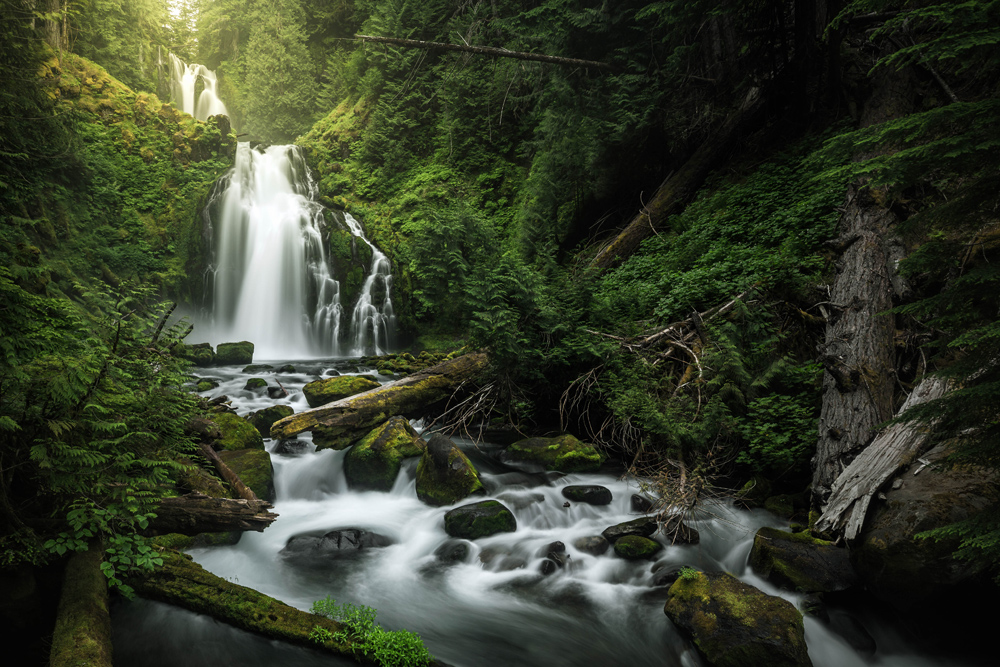Plan Ahead and Prepare
To get ready for a hike, doing a little research and preparing the right gear can mean the difference between a great outdoor experience and one turned memorable for all the wrong reasons. Think through some basics about your trip so you don’t have any nasty surprises.
- Schedule your trip for the best time: This can mean planning to avoid high-elevation areas during mosquito season, visiting wildflower meadows in early summer, or avoiding a popular hunting area during elk season. To avoid heat- and cold-related illnesses, consider timing your hike to avoid the hottest or coldest time of day, or forgoing your planned hike in bad weather conditions. (Hunting seasons range from late summer through fall, when it is best to wear bright colors. Learn more at ODFW.)
- Consider your group’s needs: Consider that not every friend or family member you take hiking has the same physical ability or stamina, interests, or experience outdoors. When planning a hike, consider these differences, talk to your companions in advance, and build some flexibility into your plans. Especially if you are hiking with kids, getting from point A to point B might be less doable than just exploring the trail, and it’s best to come prepared with extra snacks and fluids to keep them happy.
- Know where you are going: It’s easy to rely on GPS on your phone or vehicle these days, but when going out to explore you may find yourself out of range and thus unable to navigate. It’s a good idea to have a good road atlas or other map with you, and to find and write down directions to your hike in advance. Use directions from hiking guides or the National Forest or other agency that manages the area you’re going to ensure GPS directions are correct.
- Know what permits and regulations apply to an area:
- At some trailheads, a fee or permit is required to park and use the area, which is generally made clear by a sign and fee box. If you are on national forestlands, the most common fee is $5, which can usually be covered by the Northwest Forest Pass. National parks are covered by an America the Beautiful Pass. Golden Eagle passes also work for all of these. State parks are a different entity, and permits may be different. Check with local agency offices.
- Regulations in designated Wilderness areas limit group size to no more than twelve people, and a free self-issued permit is often required. Mountain bikes and any motorized equipment are not allowed in designated wilderness. Mushroom gathering is also prohibited in wilderness areas.
- Know what other users you might encounter: Regulations for each trail are often posted at the trailhead, but it’s a good idea to be aware of the types of activities an area is open to before you go.
- Be sure to let someone know where you are going and when you plan to be back, so that if you get stuck or lost someone knows that you are missing.
- Don’t assume you will have cell phone coverage and keep in mind that batteries drain faster when searching for signal. Consider bringing an external charger or turning your phone to airplane mode to save battery when there is no cell service.
- Check the weather and road conditions in advance, and be prepared for the conditions you might encounter. This includes being prepared for snow, mud, high water in streams, or storms that may come in during your trip. In Oregon, TripCheck.com is a good source of information for major travel routes. Condition reports for many trails can be found on websites like www.hikeoregon.net and www.oregonhikers.org.
What to Bring
Carrying a comfortable backpack or other bag with layers and key essentials is recommended even on short hikes – it’s good to be prepared!
Wear the right clothing: It’s best to be prepared with comfortable layers of appropriate clothing for sun, shade, rain, snow, and a variety of temperatures. You don’t need to have high-tech clothes, but should avoid wearing cotton if it will be wet or cold. Wear comfortable and sturdy shoes, preferably closed-toed to avoid getting poked or punctured, but you don’t need to have specialized hiking boots for most trips.
Carry “the ten essentials” which can help you answer two basic questions: Can you prevent emergencies and respond positively should one occur (items 1-5)? And can you safely spend a night–or more–outside (items 6-10)? Use this list as a guide and tailor it to the needs of your outing.
- Navigation. The essential basics are a reliable map and a compass (and the knowledge to use it). Be prepared with a physical or pre-downloaded map and directions.
- Headlamp or flashlight. Include spare batteries.
- Sun protection. Wear sunglasses, sun-protective clothes, and broad-spectrum sunscreen rated at least SPF 30.
- First aid Basics. Include bandages; skin closures; gauze pads and dressings; roller bandage or wrap; tape; antiseptic; blister prevention and treatment supplies; nitrile gloves; tweezers; needle; nonprescription painkillers; anti-inflammatory, anti-diarrheal, and antihistamine tablets; topical antibiotic; and any important personal prescriptions, including an EpiPen if you are allergic to bee or hornet venom.
- Knife. Also consider a multitool, strong tape, some cordage, and gear repair supplies.
- Fire. Carry at least one butane lighter (or waterproof matches) and firestarter, such as chemical heat tabs, cotton balls soaked in petroleum jelly, or commercially prepared firestarter.
- Shelter. Can be as simple as a large black garbage bag or lightweight emergency bivy sack.
- Extra food. For shorter trips a one-day supply is reasonable.
- Extra water. Carry sufficient water and have the skills and tools required to obtain and purify additional water.
- Extra clothes. Pack additional layers needed to survive the night in the worst conditions that your party may realistically encounter. And because this is Oregon, a rain jacket and rain pants are always a good idea.



